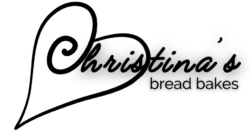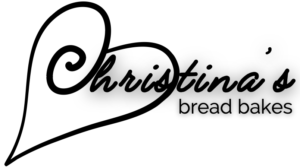From the USA (or some other country) living in Europe for the first time?
Are you an American baker living abroad in Poland or Germany? Are you confused by the range of flours available at your local grocery store? No worries! This article, “European Flour Explained to the Confused Baker” is written to help you understand and decide which flour is best suited for your chosen recipe. Or, if you want to learn about the topic, then read on! You will find a wealth of information on the flours. First time shopping in a foreign country? Read about my experience and recommendations here.
As an Amazon Associate I earn a small amount on qualifying purchases at no cost to you.
European Flour Types
In this article I explain six flour options I personally tried while living in central Europe. There is no universal rating system for European wheat flour, however, from my experience, these numbers correlate to flours found in Poland and Germany. These include: Universal (type 480), Stronger White (type 550), Spelt (630), Bread (type 750), Ancient Grain (Einkorn), and Rye (type 720). Other specialty flours available but not discussed/tested are pastry flour (Type 405), pizza (Italian type 00), semolina (for pasta), and flours from other than wheat grains, including: corn, oat, almond, etc. Looking to purchase a European Flour? Click button below.

What is the Type Number for?
Before we dive into discussion, I want to explain the assigned “type” numbers used to identify flours in Poland and Germany. The “type” number represents the ash count. Ash count is the resulting minerals leftover after burning the flour. Ash count loosely translates into the quantity of minerals, thus, the healthiness of the flour. Simply put, the higher “type” number = more ash = healthier flour.
Where do the Minerals Come from in Flour?

The outer parts of the wheat kernel contain the majority of the nutrients and fiber in wheat. Here is a simplified explanation. There are three major parts of the wheat kernel (those grains located at the top of the growing stalk). The three parts are: bran, germ and endosperm. The outer two layers of the wheat kernel contain the majority of minerals from the bran and the germ. The third part to a wheat kernel is the interior endosperm, which is mostly carbohydrates.
What Makes Flour White or Brown?
White flour (also known as refined flour) comes from removing most parts of the wheat bran and germ (the two outer parts of the wheat kernel), leaving the endosperm (the third part). White flour results from grinding the endosperm. Brown flour results from grinding together all three parts of the wheat kernel.
1. Refined White Flour (type 480) = All Purpose Flour


Description
What number is all purpose flour? A soft, refined white European Flour/Type 480 used for all forms of general baking. It is closest in mineral and gluten content to an American all purpose flour.
What is It Used For?
Use Type 480 flour for baking cookies, cakes, corn bread, tortes, brownies, pie crusts, quiche crusts, coffee cakes, waffles, etc. It is not a high gluten or high protein flour. Gluten content in Type 480 is typically 9%-10% and protein content is low. The mineral and nutrient count is also relatively low in comparison to carbohydrate count, which is high. This is due to the almost complete removal of the outer parts of the wheat kernel and grinding the endosperm alone.
2. Refined White Flour (type 550) = Strong White Flour


Description
White Flour/Type 550 is a refined white European flour. It has a smooth consistency, soft to the touch and it is white. It is again similar to All Purpose Flour.
What is it used for?
Type 550 in also an all purpose flour with a slightly higher gluten content (usually 10-11%). It can be substituted for the Type 480 All Purpose Flour. Type 550 is great for making yeast-risen cakes. European yeast cakes are most like the classic American coffee cake. Type 550 flour works well for classic breakfast cakes with blueberry (or any berry), apple, plum, filling/mix ins, with a crumble topping. Another suggestion is for quick breads or muffins, like banana bread or blueberry muffins. You could also use Type 550 flour to make enriched breads (breads with added milk, butter, oil, sugar), requiring less gluten. An example would be Challah or even cornbread.
3. Refined White Flour (Type 630) = White Spelt Flour


Description
Spelt White Flour/Type 630 is a refined white European flour. It has a smooth consistency, soft to the touch and it is white.
What is it used for?
Spelt originated thousands of years ago making it an ancient grain (a grain not modified by modern processes). Type 630 = refined spelt flour. Refined means removal of the bran and germ during the grinding process, making it a good all around flour. Use this spelt flour to make sourdough, farmer’s, artisan, or enriched breads. I recommend using it for denser bakes, too, like cookies, scones, brownies, etc. Do not use it for cakes where a lighter consistency is desirable.
4. Brown Flour (Type 720) = Rye Flour


Description
Rye Flour/Type 720, a brown European flour made from rye grain kernels. Some of the bran has been removed making this a “light” rye flour.
What is it used for?
Use light rye flour for making breads, biscuits, and cookies. Since rye has not gluten and an earthy and bold flavor it renders a particular rye taste and texture. Rye flour is low in gluten, so mix in a small percentage with other flours higher in gluten. Rye flour makes a very stable sourdough starter (click the link to find out how).
5. Refined White Flour (Type 750) = White Bread Flour


Description
Bread flour/Type 750 is a dense, white European bread flour. The bran and germ removed while milling hard wheat renders a white flour with a 12-14% gluten content most similar to Bread Flour or High Protein Bread Flour.
What is it used for?
Use type 750 European bread flour for baking breads requiring a strong gluten structure. For instance, slow-rising breads (like a no-knead bread), cold-proofed breads (breads purposely retarded in a cold temperature/refrigerator), ciabatta, or any other bread needing a strong gluten structure. Using bread flour results in a dense-structured bread, therefore do not use it for enriched doughs. For example, challah (includes butter, sugar, eggs which make for denseness) or sandwich bread, which require a lighter structure.
6. Brown Flour (Einkorn/Type 1600) = Einkorn Ancient Grain Flour


Description
I looked for a typical whole wheat/brown European flour (Type 1600) that I normally use in the United States but did not find it. I did however, find an even better option, the Einkorn Ancient Grain Flour. Einkorn was not cross-bread or genetically modified so it enjoys designation as nature’s oldest known wheat, thus an “ancient grain.” You can read more about the history of it in the article entitled Einkorn, Nature’s First and Oldest Wheat. Einkorn has a much higher ash content than the Type 1600 whole wheat flours made from modern and commonly grown wheat. Einkorn is high in nutrients and protein, and naturally low in gluten. Einkorn is difficult to find and expensive to purchase in the United States due to growing conditions. Finding it readily available at the grocery in Europe thrilled me. If you want to purchase it online, use this link.
Difficulty finding Einkorn Flour in the USA? It is available via mail order. Click the button to get yours!
What is it used for?
Substitute Einkorn Ancient Grain Flour for typical whole wheat/Type 1600 European flour. Grinding the wheat kernel whole results in bran and germ in the final ground flour (see above photo). Einkorn is a low gluten flour. Mix in small quantities with universal/all purpose flours to make healthier cakes, cookies, bars, quick breads, etc. Or mix with high gluten flours, like Bread/Type 750 to make a rustic, artisan, or farmer’s (even sourdough) bread.
Ready, Set, Bake!
After reading “European Flour Explained to the Confused Baker” you are ready to bake! So, run over to your local grocery in Germany or Poland, grab yourself a bag of flour and let the experimentation begin. Please share your experience below in comments, or share this article with friends, family, etc. who could use the information. If you bake something using my tips from this article, share a photo and tag @christinasbreadbakes on Instagram, Twitter, or FB. I love to see your goodies! Happy baking bread bakers!




Pingback: Additives in White Bread Linked to Cancer, Respiratory Problems, and Other Toxic Effects - Insiders Health
I recently bought some Einkorn flour.. To say this has been a struggle to bake with this flour, is an understatement. I have followed Einkorn recipes, tried cookies and bread and it’s been one epic fail after another… No one in my family likes the taste either…Help, any hints?
Thank you,
Katya
Katya – I am sorry for your frustration with Einkorn. Not knowing which Einkorn flour you are using, I can offer that Einkorn acts similarly to modern whole wheat flour. This makes a huge difference in taste, texture, liquid absorption, and gluten development. This difference in baking may be the source of your technical dissatisfaction with Einkorn and your family’s aversion to the taste of it. Einkorn is valued for being an ancient grain but that means it will not act or taste like a modern flour. Try my 100% whole wheat sourdough recipe with the Einkorn.
Holy moly, Thank you!!!!!!!!
Hi Aaron – You’re very welcome, happy baking!
I bought some San Molino Semolina, Blue Tipo 00’, and a French T-55.
I was experimenting with those along with Oat & Chick Pea Flours’.
I ended up trying to make a pizza dough.
The finished product was something that toddlers and the elderly, (I used to work in a nursing home and the dietary staff baked these individual pizzas that tasted somewhat like what I made,) would like to eat.
Really easy to chew, crisp & pastry like.
Had I added butter or margarine, it would’ve been like pate’ en choux.
Being a North American, most pizzas are Americanised, so it lacked the “typical” denser plain white bread like consistency.
It’s too bad.
When I idealize a good pizza, I think of a bread type and consistency between a ciabatta, baguette, and Pane di Altamura in Puglia.
I dream about it.
Thanks for sharing your dreams and bread trials! Keep experimenting.